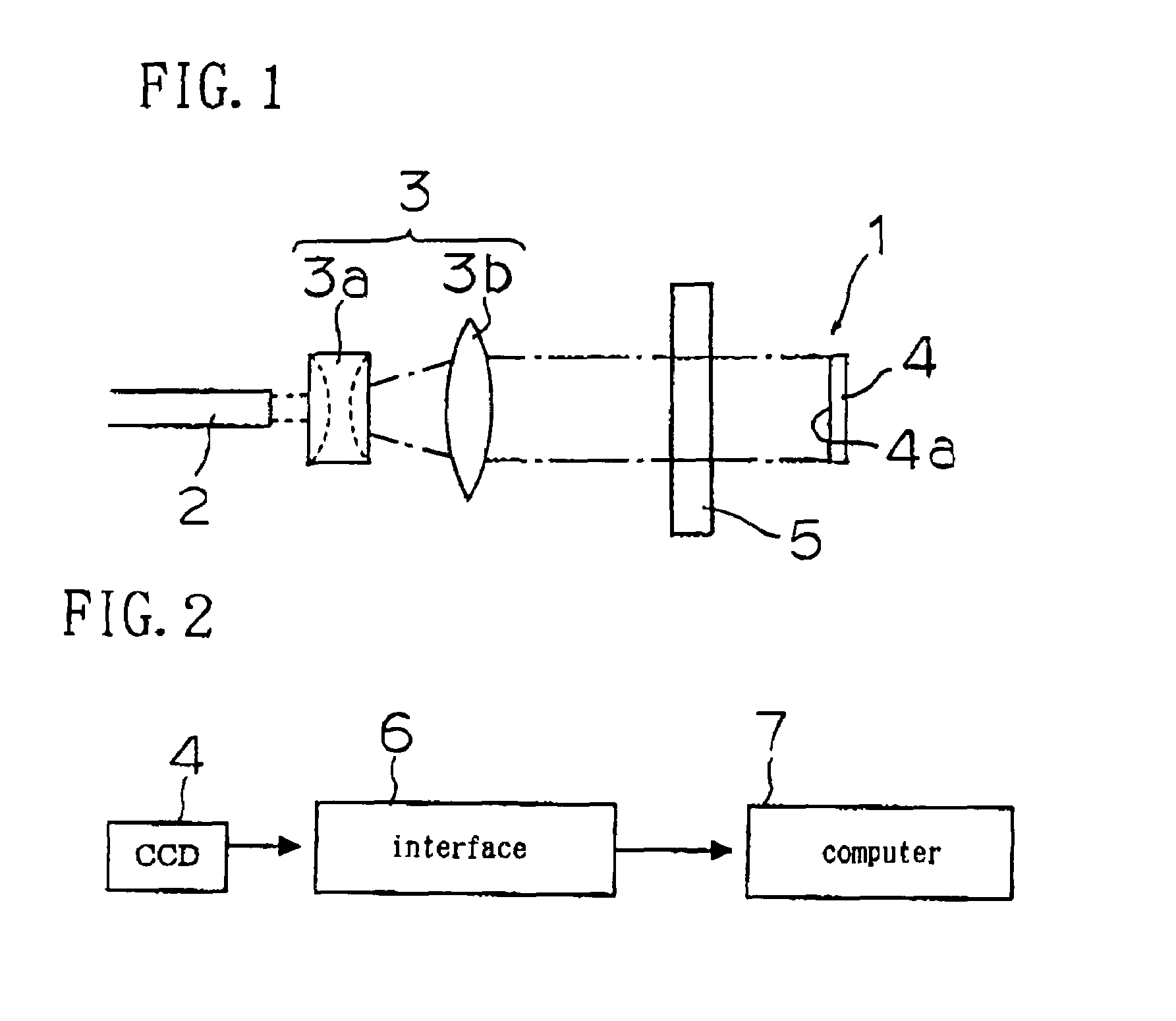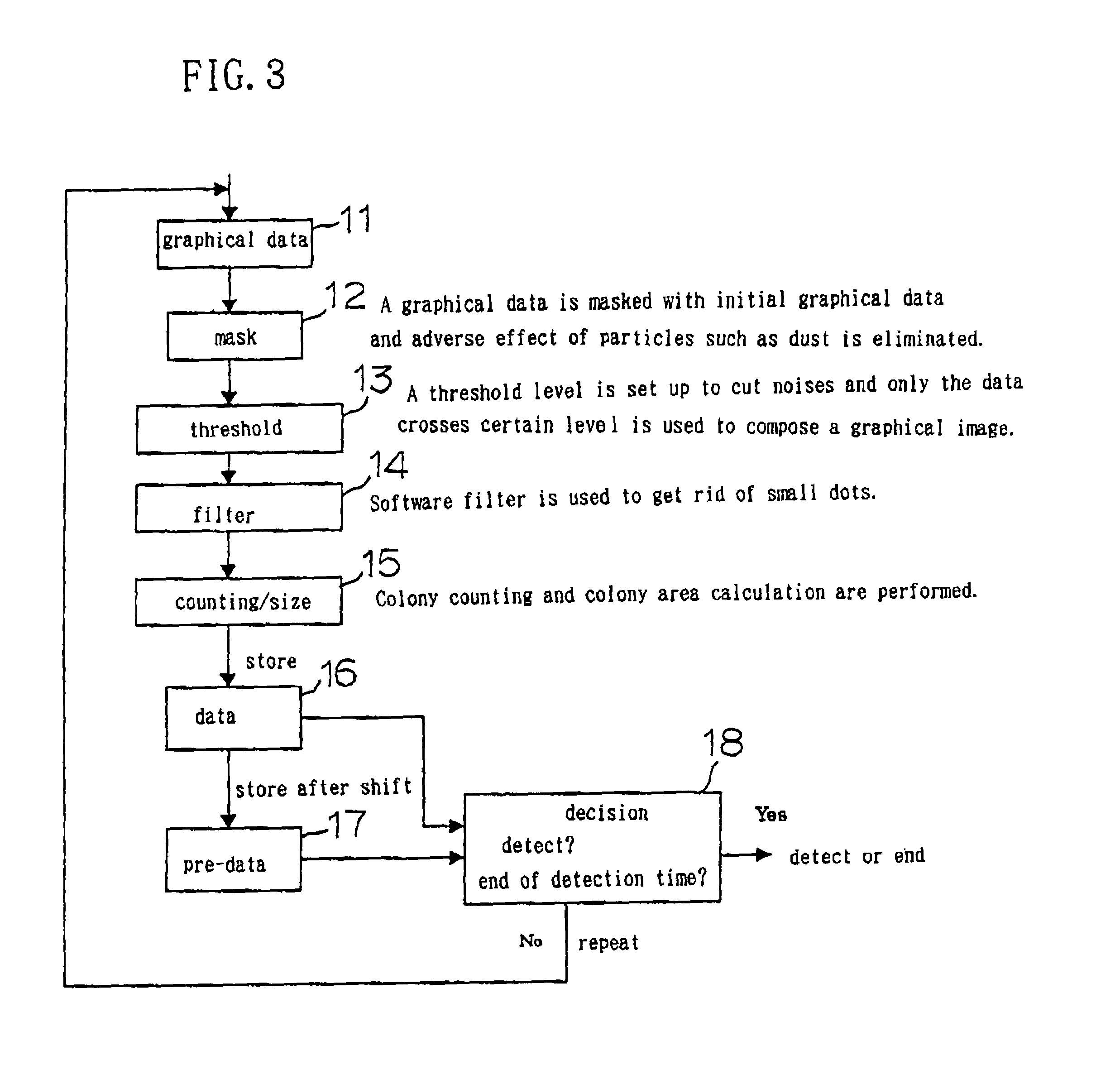Method for observing object by projection, method for detecting microorganisms and projection detecting system
a technology of object observation and projection, applied in the field of method for observing an object, can solve problems such as difficulty in overlapping of colonies, etc., and achieve the effect of easy obtaining accurate microbial counts
- Summary
- Abstract
- Description
- Claims
- Application Information
AI Technical Summary
Benefits of technology
Problems solved by technology
Method used
Image
Examples
Embodiment Construction
[0029]Using figures, some applications of the present invention are described as follows. FIG. 1 shows first form of application of the present invention.
[0030]As FIG. 1 shows, a projection detecting system 1 has a loading portion (not shown in the figure), a laser beam emitting source 2, a beam expander 3 and an image sensor 4.
[0031]A loading portion accommodates a cell 5 (transparent container for light-permeable medium). A cell 5 utilized is transparent, thin and sterilized 10 ml container cell. A loading portion has a capability of incubating the cell 5 at appropriate temperature for microorganisms to grow. Instead of having incubation ability, cell 5 can be made out from a material that heats up by itself to appropriate temperature for microorganisms to grow, receiving laser beam from a laser beam emitting source 2.
[0032]A laser beam emitting source 2 is so arranged to illuminate the cell 5 placed on a loading portion. A white laser is more desirable for a laser beam emitting s...
PUM
| Property | Measurement | Unit |
|---|---|---|
| size | aaaaa | aaaaa |
| size | aaaaa | aaaaa |
| size | aaaaa | aaaaa |
Abstract
Description
Claims
Application Information
 Login to view more
Login to view more - R&D Engineer
- R&D Manager
- IP Professional
- Industry Leading Data Capabilities
- Powerful AI technology
- Patent DNA Extraction
Browse by: Latest US Patents, China's latest patents, Technical Efficacy Thesaurus, Application Domain, Technology Topic.
© 2024 PatSnap. All rights reserved.Legal|Privacy policy|Modern Slavery Act Transparency Statement|Sitemap



